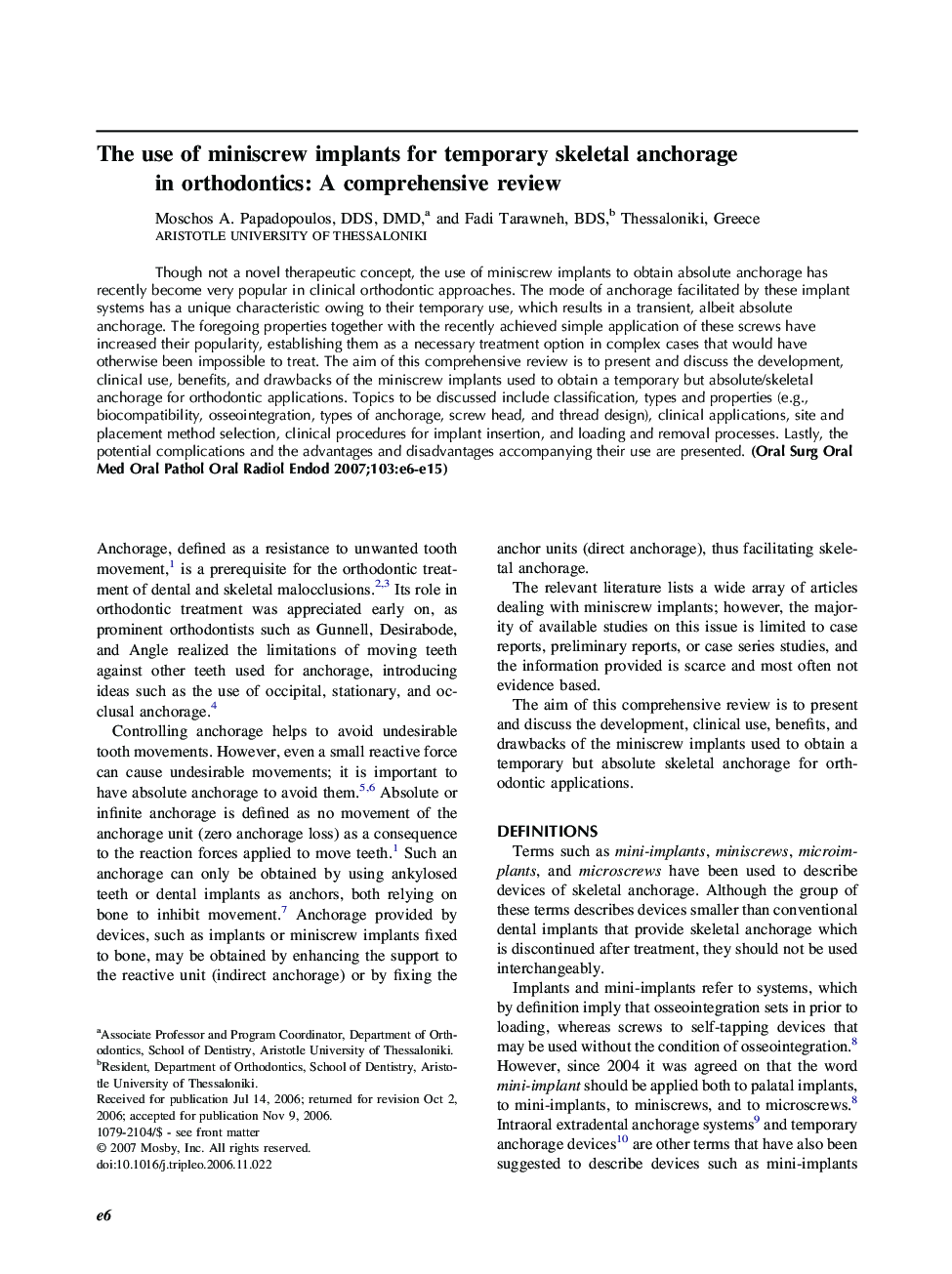| Article ID | Journal | Published Year | Pages | File Type |
|---|---|---|---|---|
| 3169412 | Oral Surgery, Oral Medicine, Oral Pathology, Oral Radiology, and Endodontology | 2007 | 10 Pages |
Though not a novel therapeutic concept, the use of miniscrew implants to obtain absolute anchorage has recently become very popular in clinical orthodontic approaches. The mode of anchorage facilitated by these implant systems has a unique characteristic owing to their temporary use, which results in a transient, albeit absolute anchorage. The foregoing properties together with the recently achieved simple application of these screws have increased their popularity, establishing them as a necessary treatment option in complex cases that would have otherwise been impossible to treat. The aim of this comprehensive review is to present and discuss the development, clinical use, benefits, and drawbacks of the miniscrew implants used to obtain a temporary but absolute/skeletal anchorage for orthodontic applications. Topics to be discussed include classification, types and properties (e.g., biocompatibility, osseointegration, types of anchorage, screw head, and thread design), clinical applications, site and placement method selection, clinical procedures for implant insertion, and loading and removal processes. Lastly, the potential complications and the advantages and disadvantages accompanying their use are presented.
